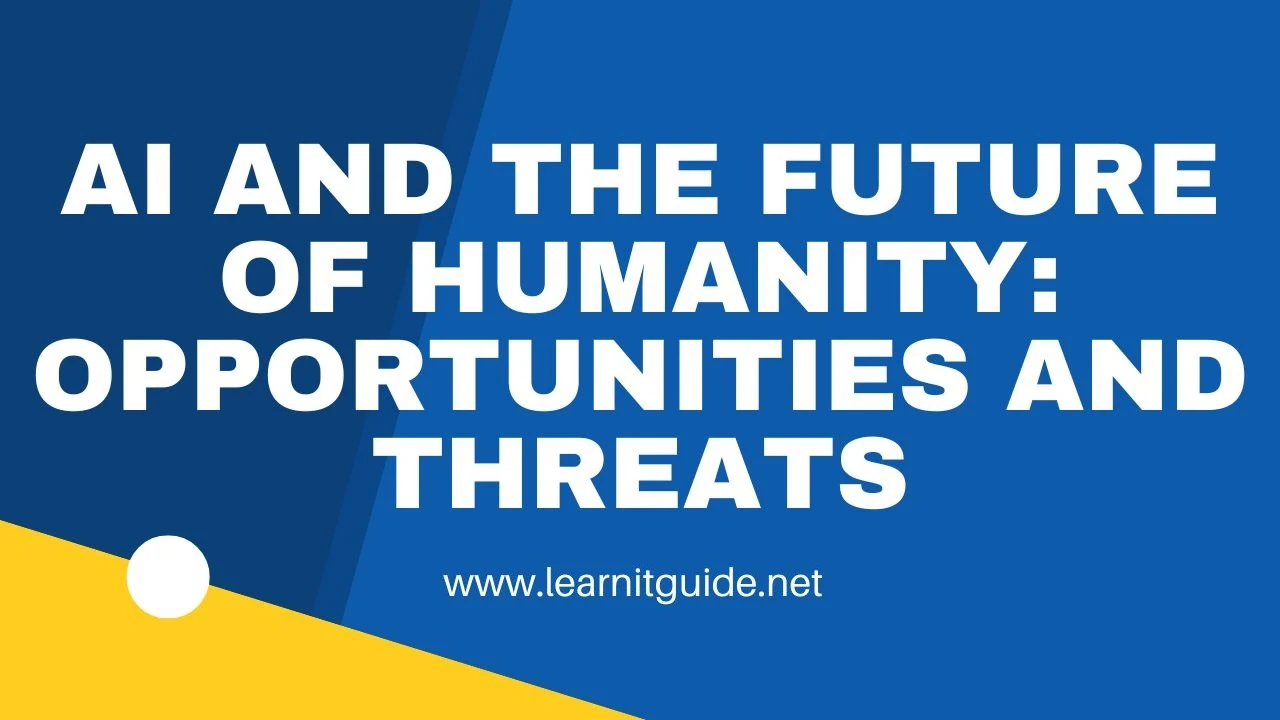This post will help you to understand about AI and the Future of Humanity Opportunities and Threats.
If you are interested in learning, Request you to go through the below recommended tutorial.
DevOps Full Course Tutorial for Beginners - DevOps Free Training Online
Docker Full Course Tutorial for Beginners - Docker Free Training Online
Kubernetes Full Course Tutorial for Beginners - Kubernetes Free Training Online
Ansible Full Course Tutorial for Beginners - Ansible Free Training Online
Openstack Full Course Tutorial for Beginners - Openstack Free Training Online
Lets Get Started.
AI and the Future of Humanity: Opportunities and Threats
Introduction
Artificial Intelligence (AI) has rapidly grown over the past decade, and its impact has been felt across numerous industries. AI has the potential to transform humanity in profound ways and bring about significant advancements in various aspects of human life, including healthcare, education, transportation, and communication. However, AI also poses a threat to humanity, particularly with regards to job displacement, privacy and security concerns, and the potential for AI systems to perpetuate and amplify existing biases. In this essay, we will explore both the opportunities and threats that AI presents to humanity and what steps can be taken to ensure that AI is developed and used responsibly.
Opportunities
Healthcare
One of the most significant opportunities that AI presents to humanity is in the healthcare sector. AI has the potential to revolutionize the way healthcare is delivered, providing more accurate diagnoses, personalizing treatments, and improving the overall quality of life for patients. For example, AI-powered medical imaging systems can help detect diseases in their early stages, allowing for earlier and more effective treatment. AI can also be used to analyze vast amounts of medical data to identify patterns and make predictions, which could lead to new breakthroughs in the treatment of various diseases.
Education
AI has the potential to transform the way education is delivered and can help bridge the skills gap by providing personalized learning experiences. AI-powered educational systems can analyze data on students' learning styles, strengths, and weaknesses, and adapt the teaching methods accordingly. This can lead to improved student outcomes and greater efficiency in the education system. AI can also be used to create virtual learning environments, allowing students to learn from anywhere and at any time.
Transportation
AI has the potential to revolutionize the transportation industry, leading to more efficient, safer, and environmentally friendly transportation systems. For example, self-driving cars, powered by AI, could reduce the number of road accidents caused by human error and improve overall road safety. AI can also be used to optimize transportation networks, reducing traffic congestion and reducing the carbon footprint of transportation.
Threats
Job Displacement
One of the biggest threats posed by AI is the potential for job displacement. As AI systems become more advanced, they will be able to automate many tasks that are currently performed by humans. This could lead to significant job losses in various industries, particularly in manual labor and low-skilled jobs. While some jobs may be replaced by new, AI-related jobs, the transition period could be difficult for many workers, and it is important for governments and organizations to address this challenge proactively.
Privacy and Security Concerns
AI systems process vast amounts of data, and there is a risk that this data could be misused or fall into the wrong hands. There are also concerns about the accuracy of AI-powered systems and the potential for them to perpetuate existing biases. For example, facial recognition technology, which is powered by AI, has been criticized for its potential to perpetuate racial and gender biases. It is crucial that AI is developed and used in a responsible manner, and that robust privacy and security measures are put in place to protect individuals' data.
Bias and Discrimination
AI systems are only as good as the data they are trained on, and if the data contains biases, then the AI system will also be biased. This can lead to discriminatory outcomes, particularly in fields such as hiring and criminal justice, where AI systems are being used to make important decisions. It is important that AI systems are developed and used in a transparent and ethical manner, and that steps are taken to mitigate the potential for AI to perpetuate existing biases.
Conclusion
In conclusion, AI presents both opportunities and threats to humanity. On the one hand, AI has the potential to bring about significant advancements in various aspects of human life, including healthcare, education, and transportation. On the other hand, AI also poses a threat to humanity, particularly with regards to job displacement, privacy and security concerns, and the potential for AI systems to perpetuate and amplify existing biases. To ensure that AI is developed and used responsibly, it is important for governments, organizations, and individuals to take steps to mitigate the potential negative impacts of AI and to ensure that AI is used in a transparent and ethical manner. This could include investing in education and training programs to help workers transition to new, AI-related jobs, implementing robust privacy and security measures to protect individuals' data, and taking steps to mitigate the potential for AI to perpetuate existing biases. By taking these steps, we can ensure that AI is developed and used in a way that benefits humanity as a whole.
That’s it for this post, Hope you have got an idea about AI and the Future of Humanity Opportunities and Threats.
You can also refer similar links below on Artificial Intelligence topics.
How AI is Revolutionizing Industries and Creating New Jobs
The Advancements of AI Past, Present, and Future
Artificial Intelligence and Its Potential to Solve Global Challenges
The Intersection of AI and Human Creativity
Understanding AI Algorithms and Machine Learning Techniques
Keep practicing and have fun. Leave your comments if any.
Support Us: Share with your friends and groups.
Stay connected with us on social networking sites, Thank you.








0 Comments